Murovaniye Kurilovtsy
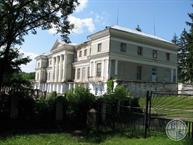 |
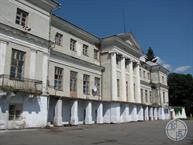 |
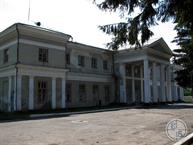 |
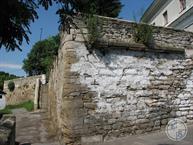 |
| Remains of the fortress walls | |||
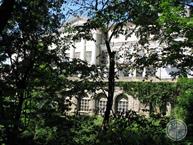 |
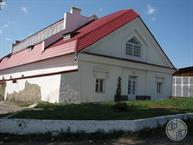 |
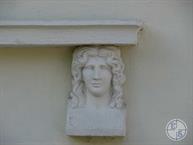 |
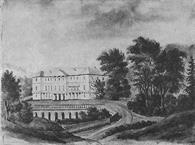 |
| Through the trees can be seen well-preserved fortress escarpment | Arsensl | The picture of Napoleon Orda, 1870 | |
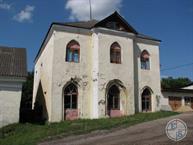 |
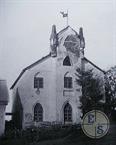 |
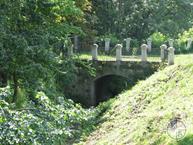 |
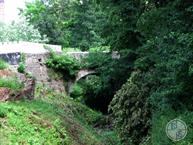 |
| Photo of P.Zholtovskiy, 1930 | |||
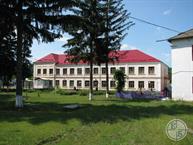 |
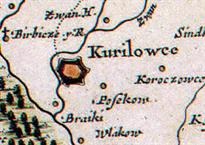 |
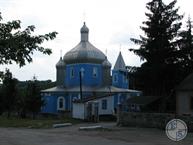 |
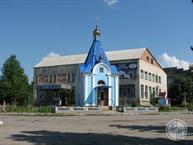 |
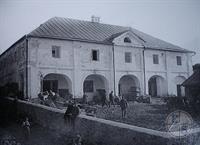 |
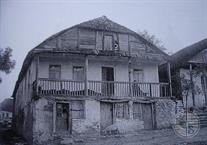 |
||
| City Hall, 1930 |
Murovaniye Kurilovtsy, 2009
For the first time about the village Churilovtsy, which eventually turned into Murovani Kurylivtsi, mentioned in 1453. The village was founded in the famous skirts come Churilov.
Somewhere in the middle of the XVII century. Zofia, daughter sanotskogo steward Nikolai Churilov and Zofia Lyantskoronskoy, Churilovtsy received from parents as a present to the second marriage with Kazimierz Kosakovskyi. Since the end of the XVIII century. - Owned by nobles Kosakovskyi. After joining the right bank to the Russian possessions possessive refused to swear allegiance to the queen, for which the village was taken away from her.
In 1775 the village received the right to two fairs. Since 1861 - the center of the parish Murovanokuriletskoy Ushitskogo County.
Somewhere in the middle of the XVII century. Zofia, daughter sanotskogo steward Nikolai Churilov and Zofia Lyantskoronskoy, Churilovtsy received from parents as a present to the second marriage with Kazimierz Kosakovskyi. Since the end of the XVIII century. - Owned by nobles Kosakovskyi. After joining the right bank to the Russian possessions possessive refused to swear allegiance to the queen, for which the village was taken away from her.
In 1775 the village received the right to two fairs. Since 1861 - the center of the parish Murovanokuriletskoy Ushitskogo County.
In 1847, in Murovani Kurylivtsi lived 155 Jews in 1897 - 1410 it was already 32.4% of the total population of the village.
Key classes of the Jewish population in the 19 - early. 20. - Trade and crafts. In 1861, Jews owned 2 watermills, 4 shops; Jews were among 60 artisans (including bakers, barbers, shoemakers, tailors..); 2 Jew rented a sugar factory.
In 1889 it acted in Murovani Kurylivtsi 3 synagogues. In the beginning. 20. He worked as a school, which has been supporting the OPE.
Since 1906 in the town of Rabbi Aron was Yehuda Leib Shoikhet (1882-?).
In 1912 acted Jewish Savings and Loan Society, in 1913 - Talmud Torah, in 1914 - 4 of the synagogue.
Hebrews belonged to a single warehouse of pharmaceutical goods, timber warehouse 2, the only bakery and 20 shops, in t. Ch. 8, all the groceries.
In 1915 in Murovani Kurylivtsi arrived refugee Jews from the front line; they assisted in Vol. h. the school was organized.
Key classes of the Jewish population in the 19 - early. 20. - Trade and crafts. In 1861, Jews owned 2 watermills, 4 shops; Jews were among 60 artisans (including bakers, barbers, shoemakers, tailors..); 2 Jew rented a sugar factory.
In 1889 it acted in Murovani Kurylivtsi 3 synagogues. In the beginning. 20. He worked as a school, which has been supporting the OPE.
Since 1906 in the town of Rabbi Aron was Yehuda Leib Shoikhet (1882-?).
In 1912 acted Jewish Savings and Loan Society, in 1913 - Talmud Torah, in 1914 - 4 of the synagogue.
Hebrews belonged to a single warehouse of pharmaceutical goods, timber warehouse 2, the only bakery and 20 shops, in t. Ch. 8, all the groceries.
In 1915 in Murovani Kurylivtsi arrived refugee Jews from the front line; they assisted in Vol. h. the school was organized.
In 1919 there was a pogrom Murovani Kurylivtsi arranged parts of the Volunteer Army.
In 1920-ies. Here operated group of youth Zionist organization "Gay-Halutz" in the same Jewish collective farm was founded, which in 1930 merged with th Ukrainian.
In 1923, 916 Jews lived in the town.
Since 1924 Murowana Kurilovetsy center of Jewish national village council Murowana Kurilivtsi district of Vinnitsa region. School teaching Yiddish worked to kontsa1930's.
In 1933, Jews Murowana Kurilovets suffered greatly during the Holodomor in Ukraine.
In 1939, 1014 Jews accounted for 25.2% of the village population.
In 1920-ies. Here operated group of youth Zionist organization "Gay-Halutz" in the same Jewish collective farm was founded, which in 1930 merged with th Ukrainian.
In 1923, 916 Jews lived in the town.
Since 1924 Murowana Kurilovetsy center of Jewish national village council Murowana Kurilivtsi district of Vinnitsa region. School teaching Yiddish worked to kontsa1930's.
In 1933, Jews Murowana Kurilovets suffered greatly during the Holodomor in Ukraine.
In 1939, 1014 Jews accounted for 25.2% of the village population.
Several Jews Murowana Kurilovets managed to escape to the rear after German troops invaded the Soviet Union June 22, 1941. The city was occupied by the July 17, 1941
Initially, Hungarian soldiers stationed in Murovani Kurylivtsi. Hungarians managed to prevent a pogrom that was going to arrange the local population. At the same time, the Jews were forced to perform various kinds of grueling work.
In autumn 1941 Murovani Kurylivtsi fell under German control and the persecution of Jews became tougher. They not only continued to perform forced labor, but also had to pay various fines and hand over gold and other valuables.
In November 1941 the Jews Murowana Kurilovets were relocated to a ghetto created in the area of the Jewish poor. Judenrat was established, responsible for the supply of workers and control in the territory of the ghetto. The inhabitants of the ghetto were allowed to leave it all for an hour once a week to go to the market. The Jews were forced to wear white armbands with a blue Star of David. In addition to local, in the ghetto also it had about 100 Jews from Romania, Northern Bukovina and Bessarabia.
In August 1942 in Murovani Kurylivtsi brought Jews from Snitkova and Verbovtsa. Most Jews Murowana Kurilovets - 1170 people - were killed August 21, 1942 just outside of the city. Some professional workers who escaped the massacre, were sent to a labor camp in Letichev, some remained in the ghetto to work for the occupying power. Most of these workers were killed in September or mid-October 1942. The last few Jews Murowana Kurilovets were killed in March 1944, shortly before the city's liberation by the Red Army.
Initially, Hungarian soldiers stationed in Murovani Kurylivtsi. Hungarians managed to prevent a pogrom that was going to arrange the local population. At the same time, the Jews were forced to perform various kinds of grueling work.
In autumn 1941 Murovani Kurylivtsi fell under German control and the persecution of Jews became tougher. They not only continued to perform forced labor, but also had to pay various fines and hand over gold and other valuables.
In November 1941 the Jews Murowana Kurilovets were relocated to a ghetto created in the area of the Jewish poor. Judenrat was established, responsible for the supply of workers and control in the territory of the ghetto. The inhabitants of the ghetto were allowed to leave it all for an hour once a week to go to the market. The Jews were forced to wear white armbands with a blue Star of David. In addition to local, in the ghetto also it had about 100 Jews from Romania, Northern Bukovina and Bessarabia.
In August 1942 in Murovani Kurylivtsi brought Jews from Snitkova and Verbovtsa. Most Jews Murowana Kurilovets - 1170 people - were killed August 21, 1942 just outside of the city. Some professional workers who escaped the massacre, were sent to a labor camp in Letichev, some remained in the ghetto to work for the occupying power. Most of these workers were killed in September or mid-October 1942. The last few Jews Murowana Kurilovets were killed in March 1944, shortly before the city's liberation by the Red Army.
After the war, Jewish life continued for some time due to the war and returned from evacuation, but today the Jews in the former shtetl no live
The most interesting attraction of the village - the Palace of the landowner Komar. Constructed in 1805 A.Komarom after Murovani Kurylivtsi were selected by Catherine the former owners - gentry Kosakovskyi, Hustler and transferred to the landlord. An interesting feature - on the one hand the building has 3 floors, on the other - 2. Built Palace of material standing on the site of the castle. Until now preserved fortifications of the 16th century castle. - Walls and escarpment. Also preserved arched bridge gateway arsenal and wings.
The palace is now a school.
The palace is now a school.
Vinnitsa Region

My shtetl
My shtetl
Jewish towns of Ukraine
Jewish towns of Ukraine


